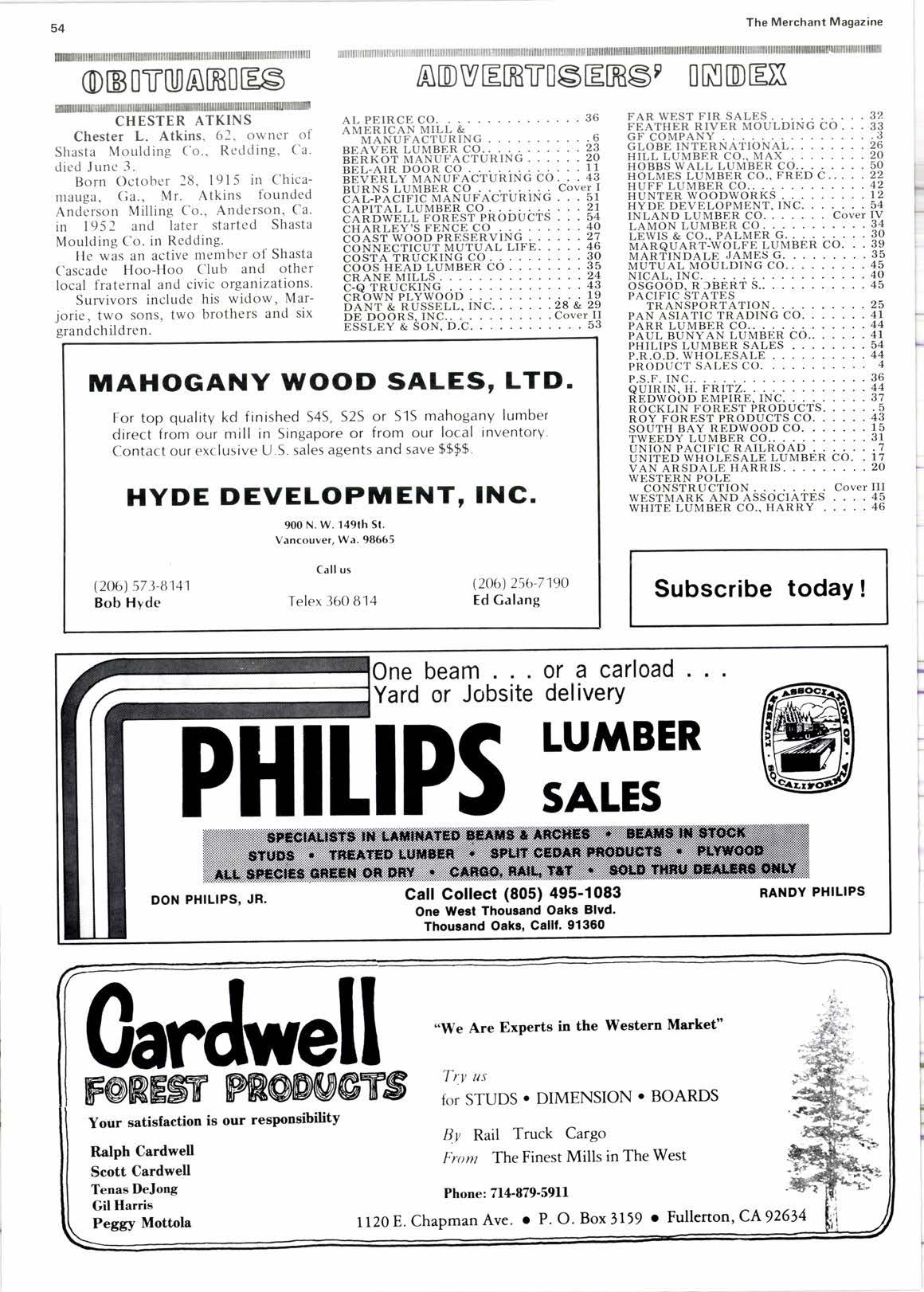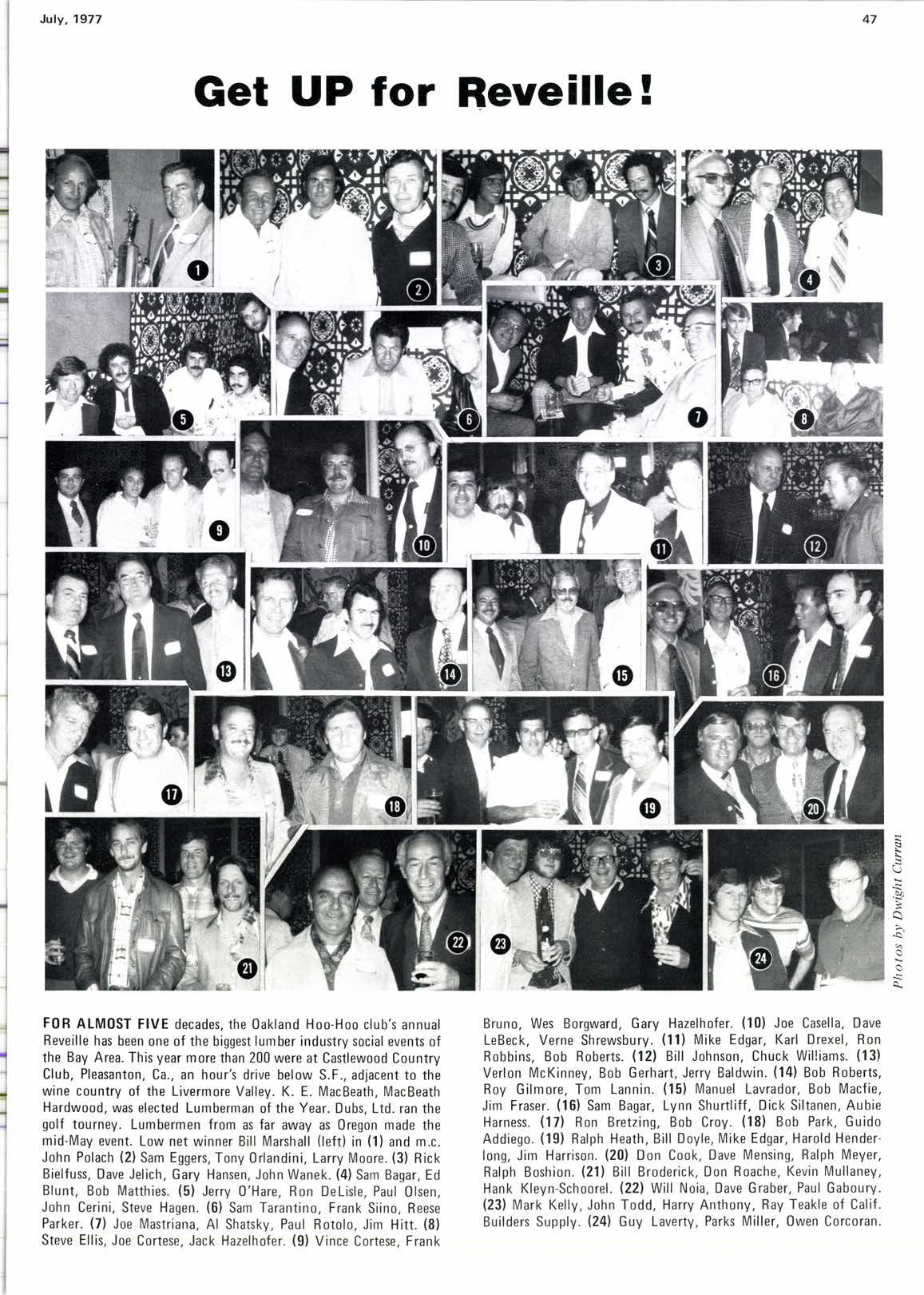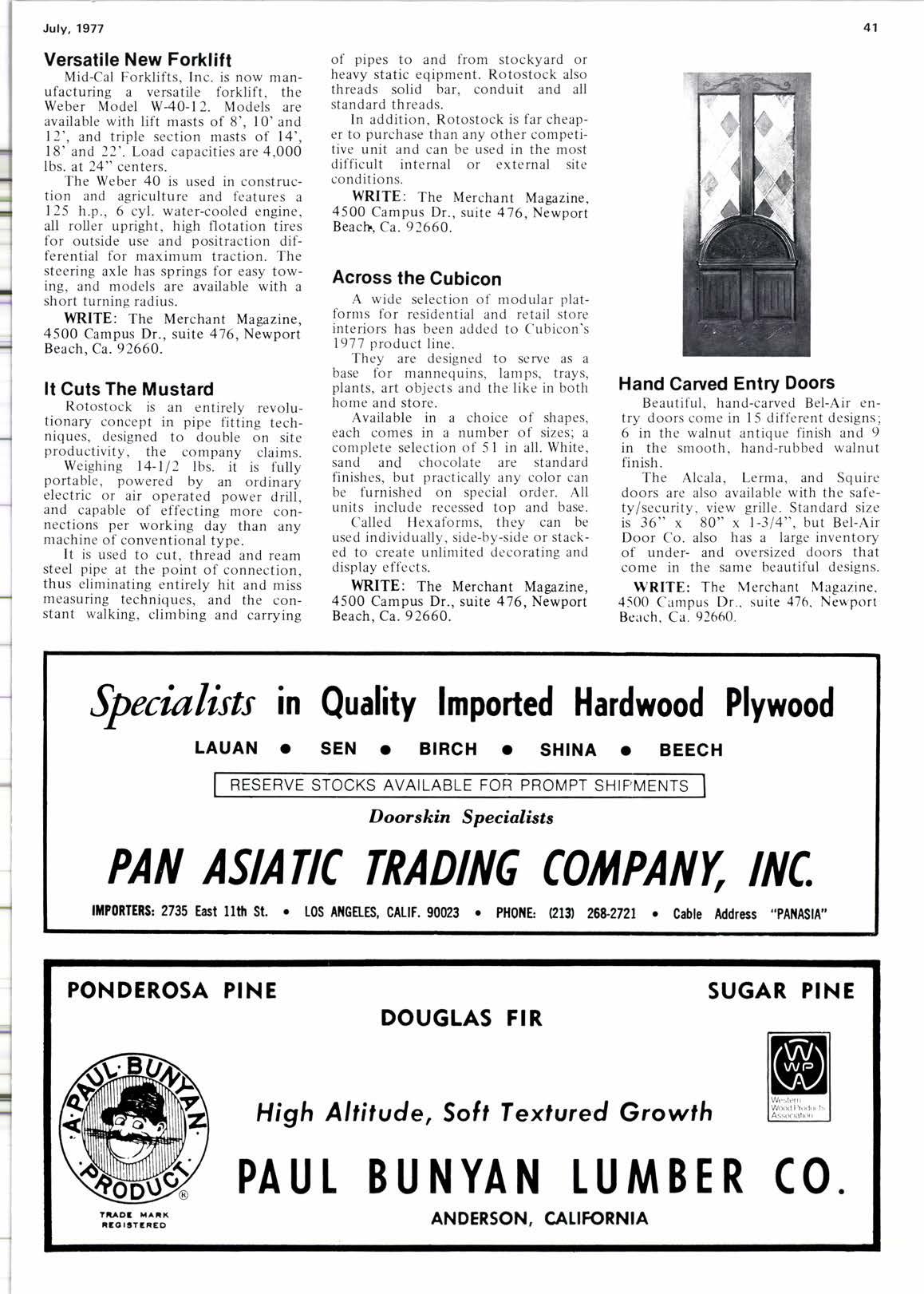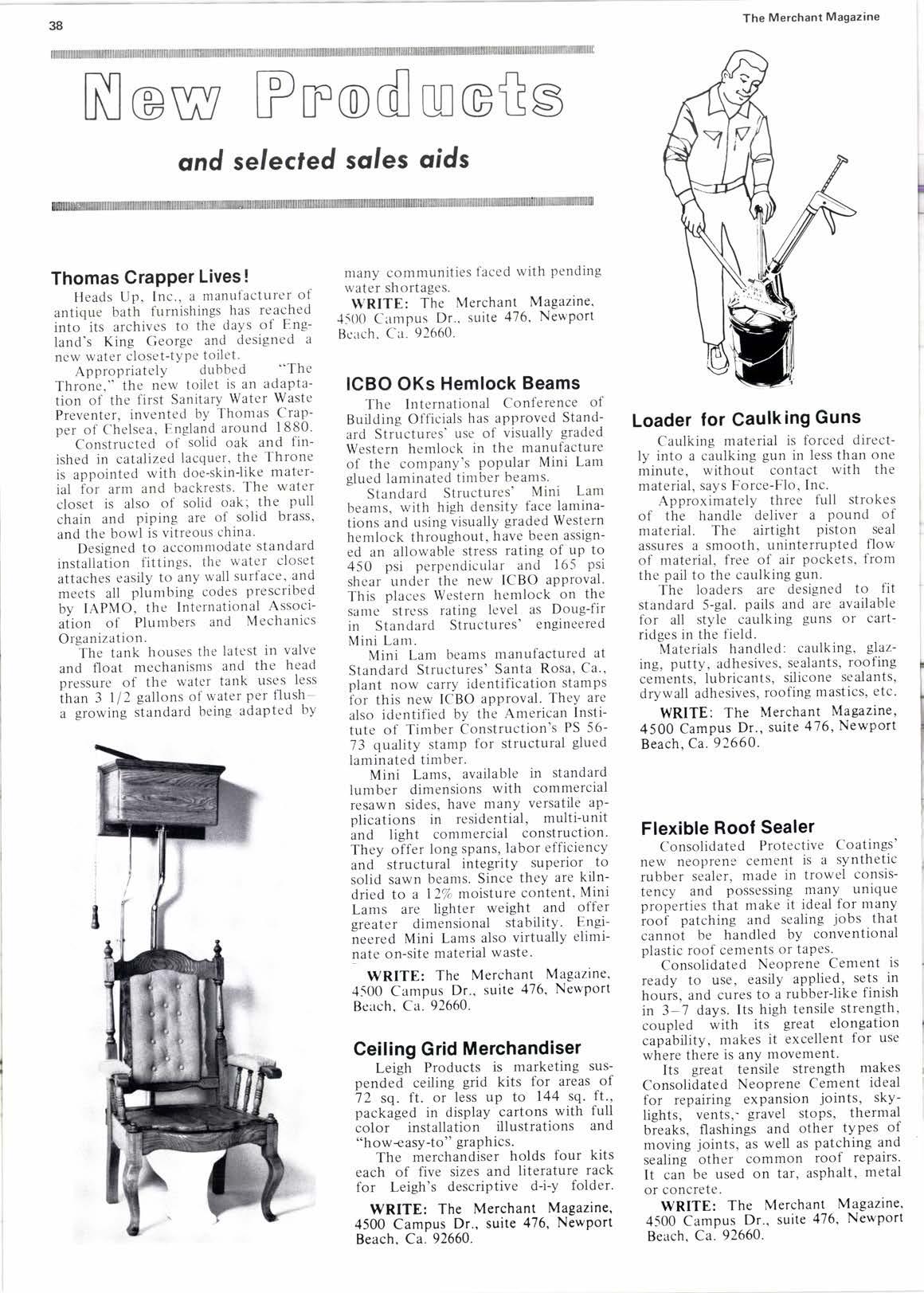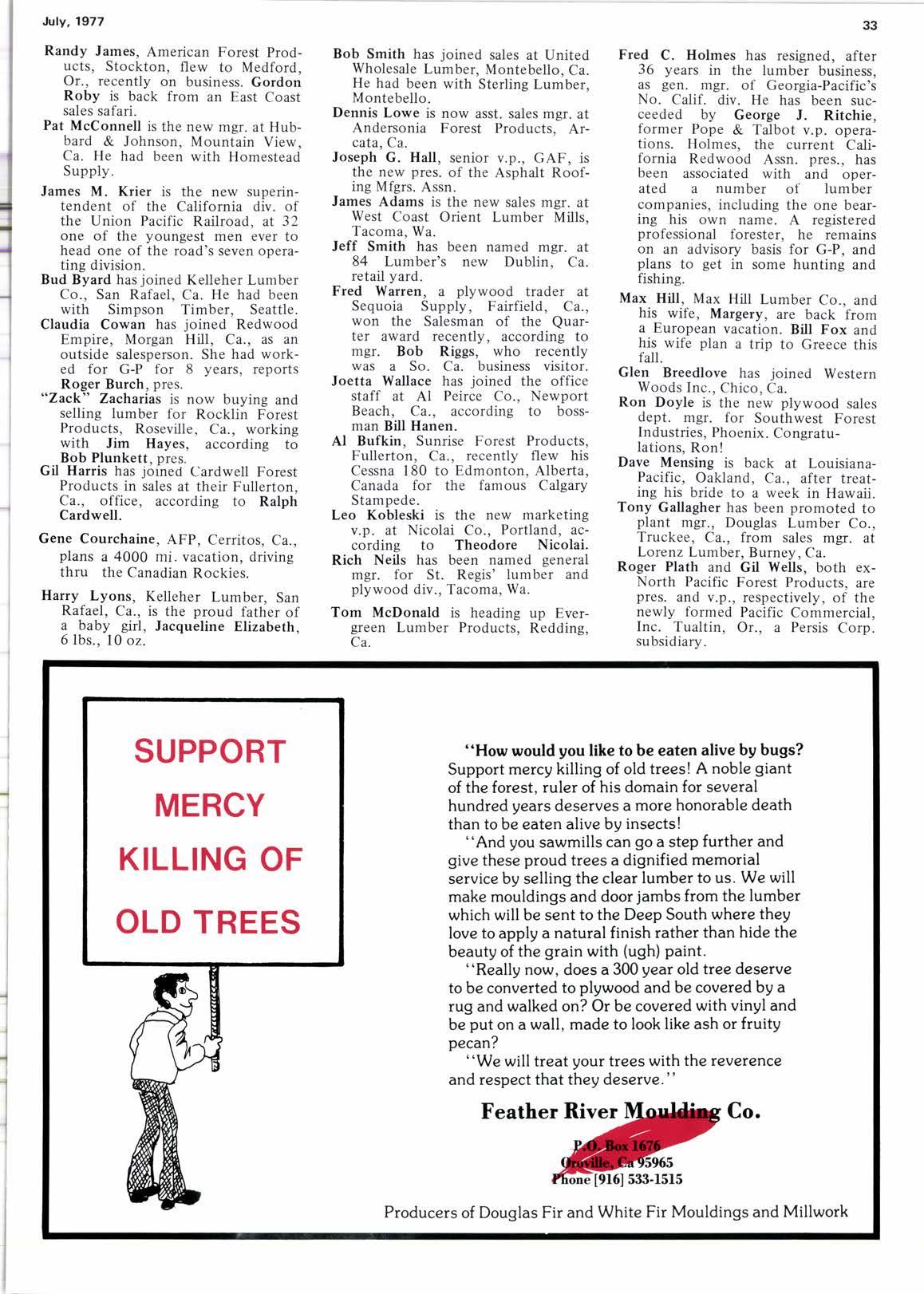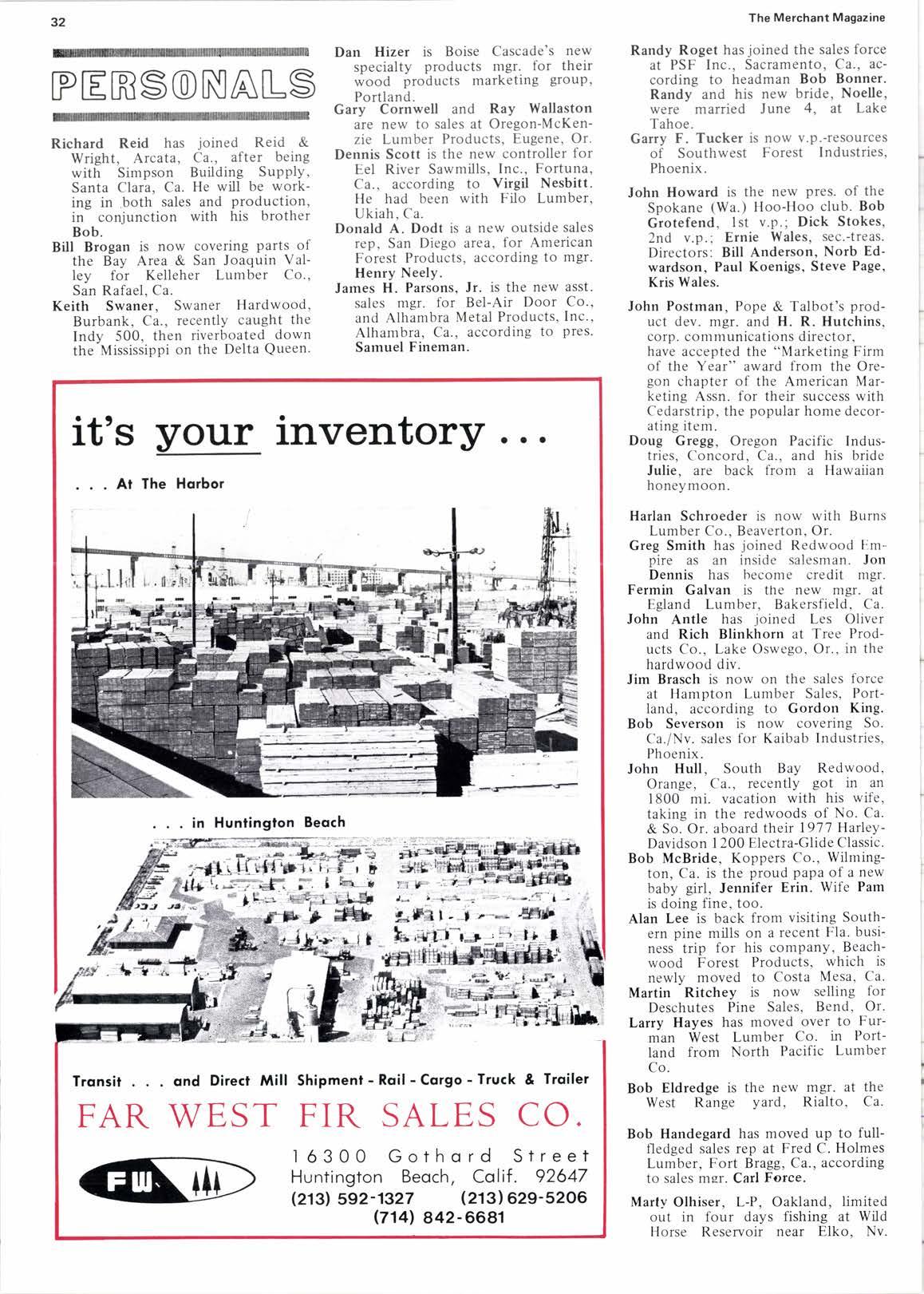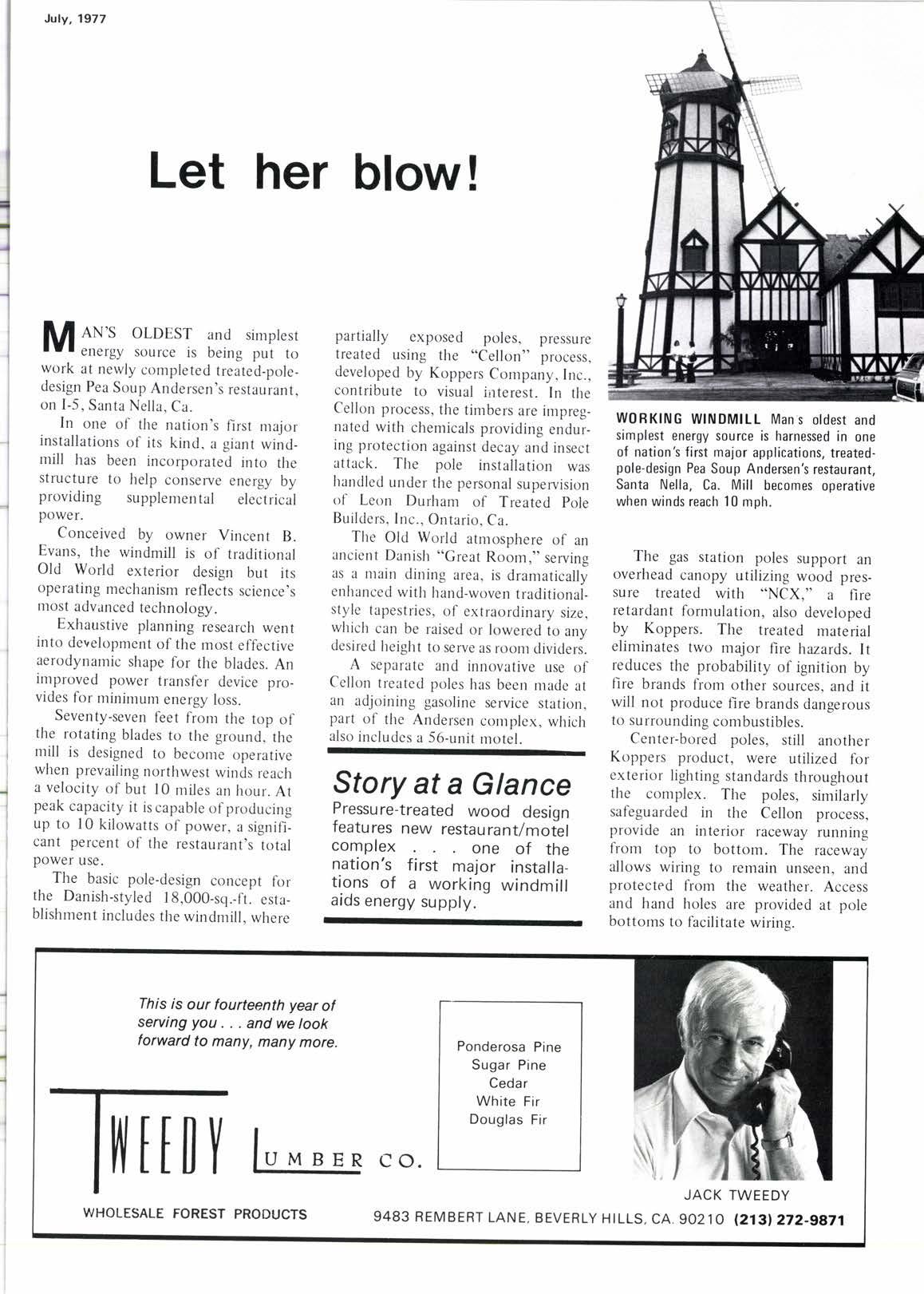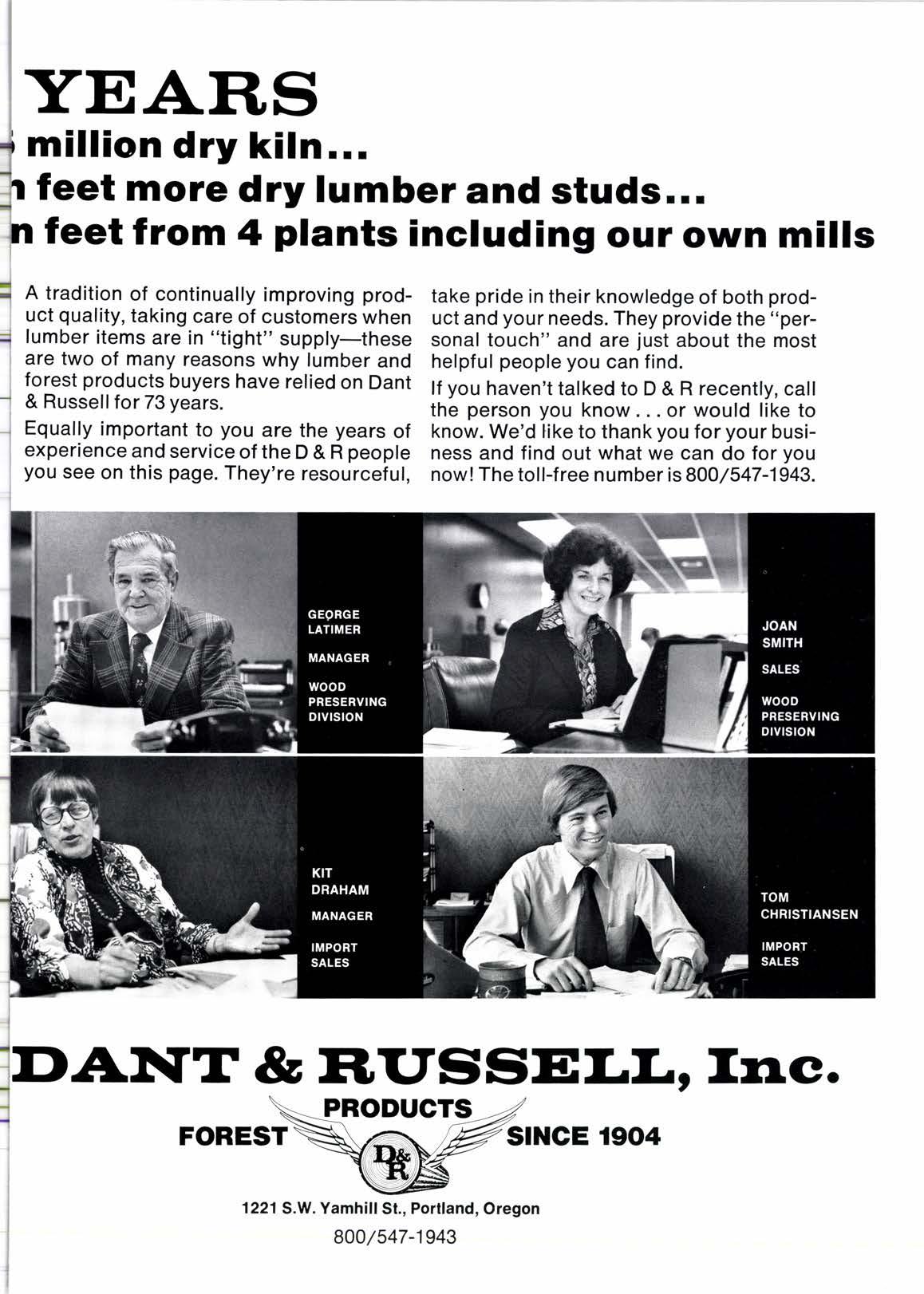
3 minute read
RR freight rate fight
to support the contention that the basis for maintaining the blanket rate is no longer valid. This viewpoint' however. is narrow, misleading and will only add to the Northeast railroads' financial problems if followed.
It is a fact that Western U.S. shiPments by water to the U.S. East Coast have, for all practical purposes, dried up in recent years. There presently- is no intercoastal service except bY barge. However, this does not mean that lumber shipments from the West to the East Coast have diminished in recent years. The volume has merely shifted from U.S. West coast origins to British Columbia Ports.
ln 192O, Congress Passed the Jones Act which prohibits intercoastal movements of goods in other than U'S' built and owned vessels. British Columbia producers, not hamPered bY the Jonis Act restrictions, have been able to utilize foreign vessels to transport their wood products to Eastern i-1.S. markets. Foreign vessels offer a $ l5 - $ 18 / MBF saving over American bottom vessels on shiPments to Official .Territory Ports.
Because of the economlcs oI shipping lumber from British Colum6iu"Uv water, the Canadians recently introduced a new tYPe of lumber vessel capable of carrying 30 million board feet per trip which is the equivalent of approximately 750 box^cars' Previously.-the average shipload from British Columbia was approximately 8 - l0 million board feet.
If the ProPosed docket is adoPted, costs by raif wil increase. This will undoubiedly result in additional ship acouisition of this type by the Canadians to take advantage of the opportunity to serve a much larger area oI the Eastern market, utilizing motor carriers to backhaul lumber from East Coast ports.
Story at a Glance
Proposed railroad freight rates are being vigorouslY opposed by Western lumber associations . . . the new rates would greatly reduce Western lumber traffic to the Northeast, theY claim historY of Present rate structures covered.
During the past 10 Years, British Columbia producers have shiPPed a yearly average of over one billion board feet of lumber to Official Territory markets bY water. The back haul capabilities of this lumber is considered to be approximately 75 miles from the dock. BY comParison, Western U.S. producers, in 1976, shipped approximately two billion board feet of - lumber by all modes to the Official Territory.
The validity of the blanket rate becomes very clear when contrasting the average annual volume of British Columbia waterborne shipments with Western U.S. lumber shiPments to the Official Territory. British Columbia supplies the Official Territory by water 50% of the volume that the entire Western U.S. lumber industry supplies to the same market utilizing all modes of transportation. If the blanket rate is eliminated, the cost of shipping by rail will increase and waterborne shipments from British Columbia will rise. The blanket rate is as valid todaY as it was in 1 93 5
Cancellation of the blanket rate will further disrupt market relationships between lumber Producers in the West and lumber Producers in other regions, particularly in the South.
A steady decline in lumber shiPments to the Official Territory from the West and a corresponding increase in lumber shipments from the South has occurred during the past l0 years. This shift is due principally to the lack on the part of the railroads of maintaining market relationshiPson Westein lumber. The railroads have oermitted horizontal percentage inireases in lumber rates which do not take into account the sensitive balance of market relationships between the West and the South. The long haul, high cost shipper is severely penalized ty ttris method of rate making and tlie results fully demonstrate this.
In 1967, Western lumbermen shioped 3.426 million board feet of tum'6er to Official Territory. BY 1976, Western lumber shipments- declined to 2,122 mtllion board feet. This decline represents a loss of 1,304 million board feet in lumber traffic to Official Territory in a period of only 10 years.
Southern shiPments, on the other hand, have been on the rise' ln 1967,
(Please turn to Page 22)
our redwood, either

Even after nearly 30 years, we're still growing to serve you better. Our expanded sales staff will soon have new off ices to help them respond faster and serve our customers better.
Our Number One Job is serving our customers. Not just talking about it, but doing it...through expansion of customer services and facilities. Our customers are our most valuable asset, they've made this business what it is and we're going to continue to go all out for them. You better believe it!
Gall us at South Bay, we're specialists in two of the world's most durable and versatile softwoods. .
REDWOOD and WESTERN RED CEDAR
Clears, Patterns, Siding, Commons, Garden ltems and Fencing
COMPLETE MILLING FACILITIES A DRY KILN
DIRECT MILL SHIPMENTS
PINE, FIR, INCENSE CEDAR

